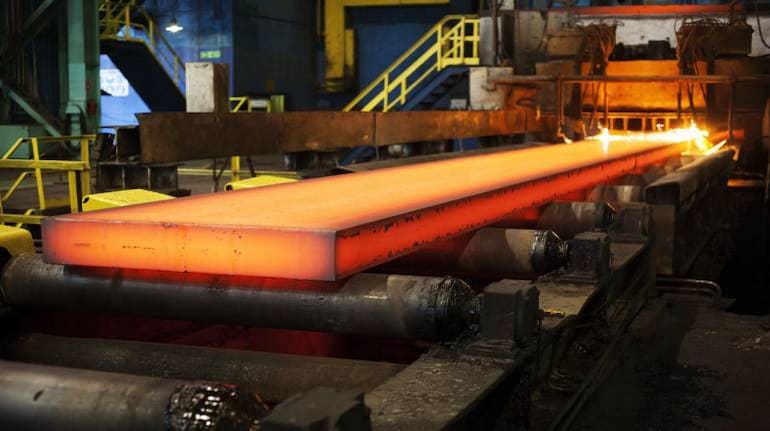



Indian steelmakers, facing pressure on their export margins after the government imposed a duty on a wide range of steel products shipped abroad, are hoping that the government will walk back its decision as the export volume is unlikely to be absorbed locally.
On May 22, India announced an increase in duty on exports of iron ore, up to 50 percent from 30 percent, and imposed an export duty of up to 15 percent on some steel intermediaries. Steel prices have rallied globally and almost doubled from their levels in March 2020.
However, prices saw some correction in Europe and North America in April-May 2022. Indian exporters were already facing pricing pressure when the government announced the duty, aimed at curbing exports to boost domestic supply.
But industry experts believe that the domestic market does not have the appetite to absorb the exported volumes in the short-to-medium term.
“You can’t increase demand overnight. Steel demand comes from projects, which have been planned with investments. There is proper designing, a specific grade of steel is identified and only after that it is procured. It’s a six-month cycle,” Alok Sahay, secretary general and executive head, Indian Steel Association, told Moneycontrol.
The association has written to the government requesting withdrawal of the decision, saying a sudden imposition of export duty on a wide range of steel products will force the industry to stop exports. Moreover, the imposition of import duty on iron pellets would impact the industry and might bring it to the “brink of closure”, the association said.
The association and industry heavyweights are also seeking relief from the government from payment of export duty on the 2 million tonnes (MT) of steel orders that are already in the pipeline, where either letters of credit (LCs) have been established or sales contracts have been signed and there is no scope for renegotiation of the price.
Some shipments are already booked and getting loaded; the impact on these will be significant. The industry says it needs three months to clear the booked orders.
Jindal Steel and Power Ltd said that clients are considering scaling down future orders in view of the higher prices due to the export duty. Reuters reported that ArcelorMittal Nippon Steel India Ltd expects about 90,000 tonnes of steel exports every month to be hit by the government's duty increase and fears that it will dampen fresh investments in the sector.
India exported 13.5 million tonnes (mt) of finished steel, amounting to around Rs 1 trillion, and another 4.9 million tonnes of semi-finished steel in FY22.
Mixed Signals
Industry executives said that as recently as the last week of April, Minister of State for Steel and Rural Development Faggan Singh Kulaste had commended the industry for scaling capacity and contributing significantly to exports.
The industry says the recent announcement on duties has caught it off guard given the earlier stance on pushing exports.
The government has been encouraging the steel industry to expand capacities and invest in production-linked incentive (PLI) schemes. The government had launched the PLI scheme for specialty steel to promote manufacturing of such steel grades within the country to reduce import and to help India emerge as a strong exporter of value-added steel grades.
“It is a paradox that steel sector has been chasing the target given by the government of India to be a part of one trillion dollars of export revenue per year and now steel sector is to export steel with additional 15 percent duty that also without the remission (RODTEP) of embedded taxes making steel sector extremely uncompetitive. It is also pertinent to point out that the export duty notified is a handicap imposed over and above the $80-100 structural disadvantage suffered by the Indian steel industry as reported by Niti Aayog (sic),” the industry said in its letter to the government.
Rating agency CRISIL said India’s steel export (finished and semis) is set to fall from 18.3 million tonnes in the fiscal year 2022 to 9-11 million tonnes in the fiscal year 2023.
Domestic steel demand is expected to clock 6-8 percent growth in FY23 and hence the drop in exports will potentially drive utilisation levels to 78-80 percent against the previous estimate of 82-84 percent.
“Exports are set to continue in geographies such as Europe and North America where prices are still at a 15-25 percent premium to the domestic market. However, lower price arbitrage will limit the quantum of the same,” said Hetal Gandhi, Director, CRISIL Research.
Discover the latest Business News, Sensex, and Nifty updates. Obtain Personal Finance insights, tax queries, and expert opinions on Moneycontrol or download the Moneycontrol App to stay updated!
Find the best of Al News in one place, specially curated for you every weekend.
Stay on top of the latest tech trends and biggest startup news.